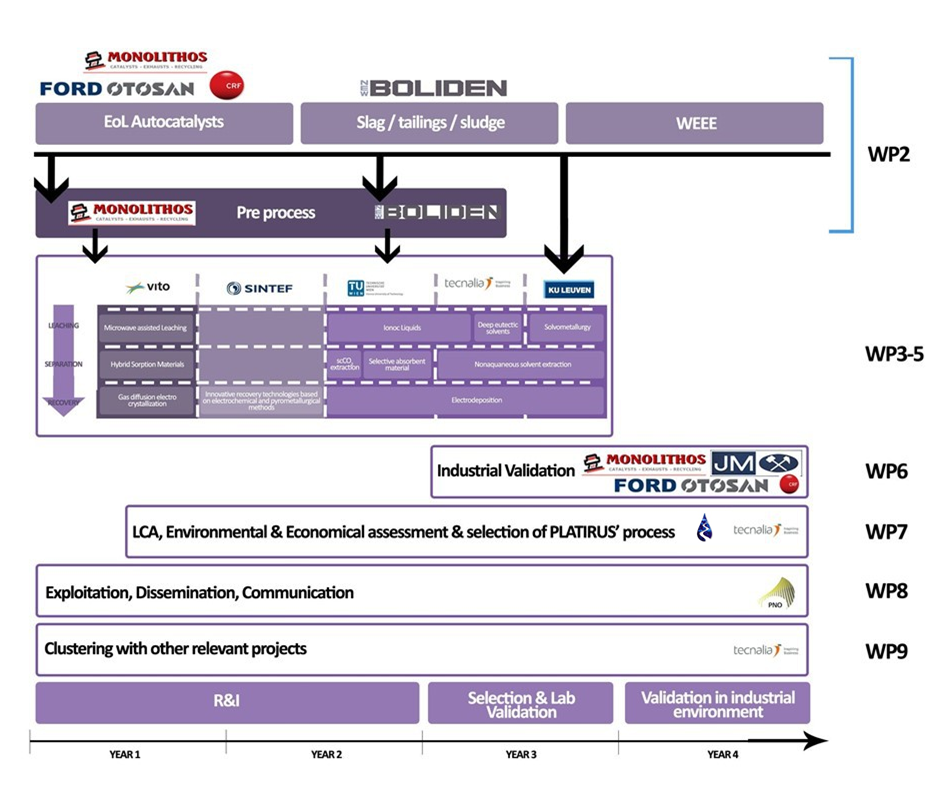The Platinum Group Metals (PGMs) comprise a group of 6 chemically very similar elements: ruthenium (Ru), rhodium (Rh), palladium (Pd), iridium (Ir), osmium (Os) and platinum (Pt). PGMs are among the least abundant of the Earth’s elements and are classified by the EC as critical raw materials (CRMs). Platinum is the metal that is the most commercially important of all the PGMs, having the largest range of applications from jewellery to automotive to electronics.
A recent study estimates that Europe is the region with the highest demand of PGMs in the world, with an annual demand of 40 tonnes, worth 1137 MEUR.
The supply of PGMs is currently ensured mostly by primary sources (72%) and the overall supplied PGMs cannot meet the global demand. The current deficit of about 20 tonnes between demand and supply is also forecasted to grow in the coming years due to the automotive emission legislations and the current irreplaceability of PGMs in autocatalysts. Moreover, the major suppliers are displaced from the regions with higher demand and can’t be considered stable and reliable for political reasons. For instance, more than 60% of the PGMs mined every year come from South Africa’s mines, which were hit by a massive strike in January 2014, leading to losses of about 2,000 MEUR to the platinum industry.

As of April 2020 Env-Aqua Solutions Ltd is not involved in the project activities.
